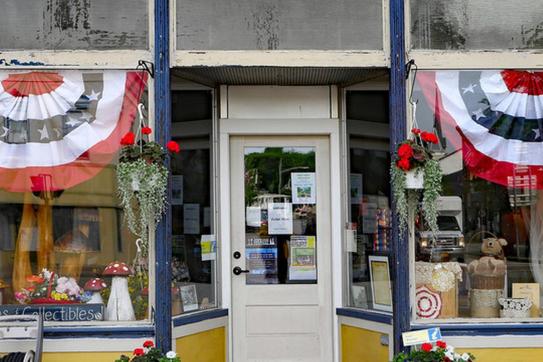If Professor Stijn Van Nieuwerburgh were to grade the $2 trillion CARES Act, including its Paycheck Protection Program (PPP) and the Federal Reserve’s Main Street Lending Program, he would give them passing marks.
“The program is a major step forward in addressing the risk of wide-spread failure of businesses due to the pandemic,” Van Nieuwerburgh says. “My research shows that the programs that were put in place may prevent about 40 percent of businesses from defaulting.”
The relief packages were expensive, totaling nearly 10 percent of the GDP, but Van Nieuwerburgh says the government would have had to spend a similar amount on bank bailouts if they had done nothing.
“In the absence of policy, banks would have toppled over and we would have had to rescue them,” he says.
Still, Van Nieuwerburgh, the Earle W. Kazis and Benjamin Schore Professor of Real Estate, was curious if the relief packages could have been structured differently.
Using a new research model, Van Nieuwerburgh, along with Vadim Elevev of Johns Hopkins University and Tim Landvoigt of the Wharton School, evaluated the effectiveness of the government relief programs that sought to stem the tide of bankruptcies and shuttered businesses.
Van Nieuwerburgh adapted the model from his earlier work on “doom loops” — a vicious cycle evident in the 2008 recession in which non-financial companies go bust, triggering the default of financial firms, and thus making it harder for non-financial businesses to borrow funds.
“We repurposed this model to think about the doom loop between financial and non-financial stability in the current crisis,” he says. “And once you have this framework, you can ask a counterfactual question: what would have happened if the government had done nothing?”
The short answer for Van Nieuwerburgh is that it would have been “a complete disaster with financial sector distress much worse than in the Great Financial Crisis.”
Van Nieuwerburgh examines if a better program could have been instituted. His research looks at the effectiveness of hypothetical government bridge loans that would be conditional based on need, rather than the lump sums available from the CARES Act, some of which have still not reached businesses, or went to firms that did not need the funds.
“The upshot would be that the size of loans could be adjusted,” he says. “Whereas now, everybody qualifies and is getting roughly the same loan.”
The experiment found that the real-life relief packages were effective, as they prevented about 40 percent of corporate bankruptcies and a spillover into a financial crisis.
The hypothetical conditional loan program could prevent nearly all bankruptcies, limit the damage to the financial sector even more, and cost much less to the government. And because dollars would only go to companies that needed them, the $670 billion in the PPP could be stretched much further, ensuring that all companies in need of assistance would receive some measure of relief—unlike what actually happened.
The paper also considers that the economy at large could enter into a new, COVID-19-inspired, normal defined by cautious lending and reduced risk-taking by banks.
“It makes the initial shock a lot worse because now that the pandemic has struck we fear that it could last for two or three years,” Van Nieuwerburgh says. “And even if the pandemic lasts for only one year, we now have a belief that it could come back at some later date in the future.”
Van Nieuwerburgh says that in the coming months it will be important to monitor debates around government debt, which is projected to rise by between 18 and 20 percent of GDP this year. This will result in record borrowing for the Treasury and could lead to rises in interest rates once the crisis is over.
Thus far, the Federal Reserve has been purchasing government debt, but Van Nieuwerburgh says that eventually the private sector will need to absorb government debt, the result of which could be hikes in interest rates.
“If you issue a ton of debt, then whomever is buying it would need to be paid more. That’s why rates would go up.”
For Van Nieuwerburgh, the amount of government debt makes for a precarious fiscal situation due to an increase in debt service.
“In my model, it takes about 25 years to pay off this extra debt,” he says. “We’re going to be paying it back through higher taxes or, potentially, higher inflation.”
“But those are worries for later,” Van Nieuwerburgh adds. “First, we need to make sure that the corporate lending programs function smoothly, that the money flows to the businesses, and to tweak the programs so that they can do the most good.”
